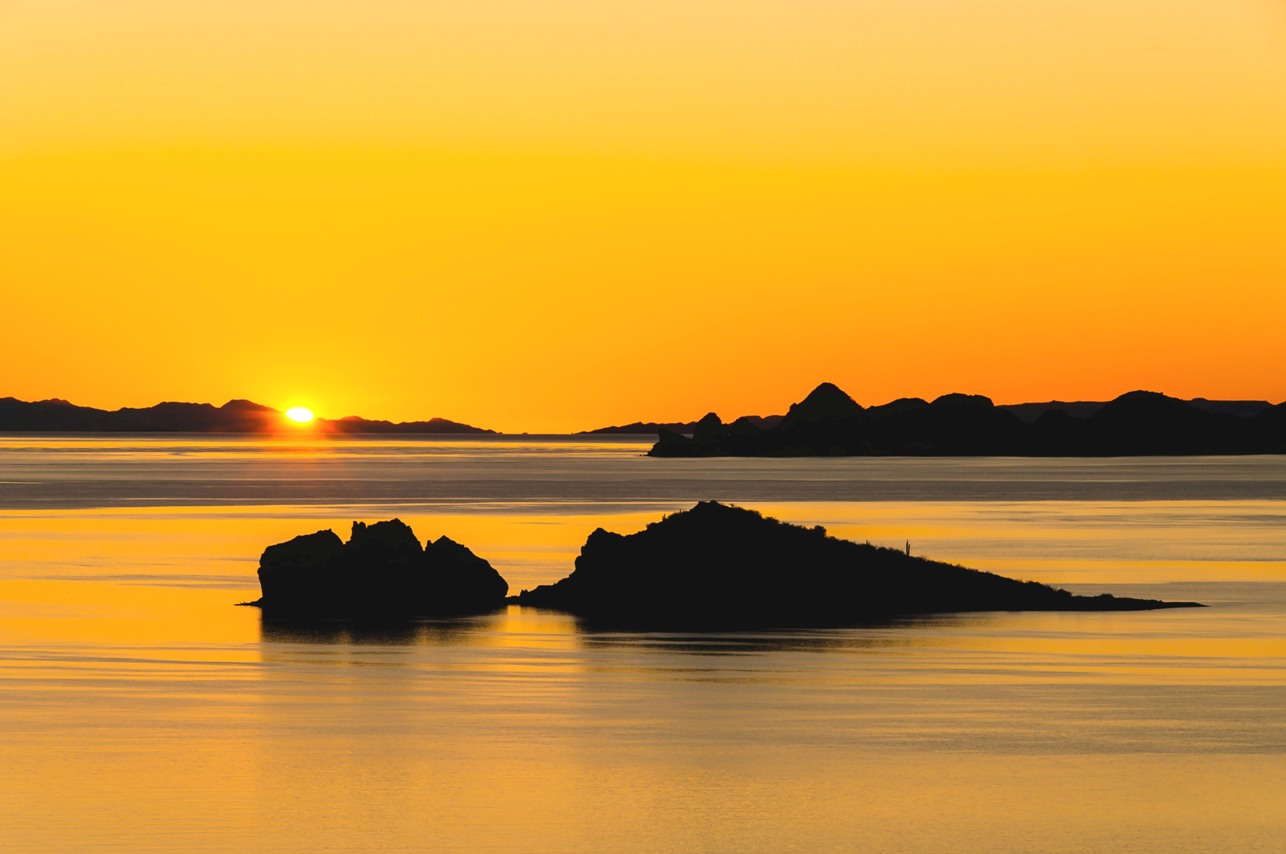I spent last summer in Nopolo in Baja California Sur diving
the islotes and headlands that I could reach with my kayak. I dove early in the
morning, the coolest part of the day, and often saw the sunrise from the
Transpeninsular Highway on my way to places where I could launch a boat. The Sea of
Cortés was warm (low 80s°F) and gin-clear (visibilities greater than 40-50 ft).
By mid-afternoon the heat was oppressive, weighing on me like a thick blanket;
I spent them studying Spanish by the pool or visiting friends in homes where
air conditioners and fans ran all day.
 |
| Santa Rosalía harbor with abandoned copper smelter (tall smokestacks) |
Several divers told me that the best visibility in the
Sea of Cortés occurred during the summer and I had to find out if that was true.
The heat of Mexico in the summer was too much for Rande; she spent it at 7,000
feet in northern New Mexico looking for a place for us to live. We’ve been on the
road since we sold our house in northern Colorado in 2013 and she was tired of
living out of a truck always on the go. Near the end of the summer, with her father seriously
ill, the plan was for me to return to New Mexico, meet Rande and drive us to Washington
to be with her family.











